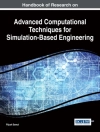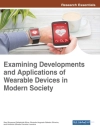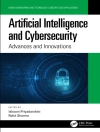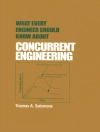This unique and definitive reference on hormone abuse in food producing animals is for scientists, regulators and consumers. It contains the results of a meeting held in November 2006 to discuss the progress made by the Veterinary Medicines Directorate (VMD) supported programme on steroid abuse detection. When the ‘hormone ban’ first arose in the EU, there were only 15 Member States. There are now 27 and some newer members lack the background knowledge of this issue. This book sets out to summarise the history and show the significant progress that has been, and continues to be, made in this area. It is the only comprehensive review of this subject available and contains input from leading researchers from around the world. The initial chapters provide valuable background information. For example, the chapter on toxicology and risk covers the controversies arising from the interpretation of the effects of artificial hormones in meat-producing animals. The book then goes on to deal with how the issue has been managed via national and international detection programmes. It finishes by covering the resulting cutting edge analytical science including current research using ‘omics’/ profiling for ‘natural hormones’ and novel detection techniques such as IRMS. This book offers readers an insight into the risk management of an important food related issue and how current analytical analyses can assist evidence-based risk assessments. There is comprehensive coverage of all past and current issues relating to growth promoting hormone abuse in animals.
表中的内容
Introduction Historical overview of the use of hormonal substances in food production and their toxicology National and international programmes for the detection of hormone residues Current analytical methods used for the detection of hormone residues Current research into new analytical procedures
关于作者
Jack F. Kay is an Honorary Senior Research Fellow in the Department of Statistics and Modelling Science at the University of Strathclyde. His interests lie in the consideration of sampling criteria to veterinary drug surveillance issues. He also has a full time position with the Veterinary Medicines Directorate (VMD) in the UK and has recently been appointed an expert advisor to the UN Food and Agriculture Organisation. The work for VMD also includes membership of the Analytical Sub-Group of the Pesticides Residues Committee, a UK FSA expert group on antimicrobial testing of milk, and membership of the FAPAS Advisory Committee. He contributed to the European Commission Decision that established performance criteria for analytical laboratories undertaking analyses for veterinary drug residues. He is also an ISO trained technical assessor, an active member of the Codex Committee on Residues of Veterinary Drugs and co-chair of the ad hoc Working Group on Methods of Sampling and Analysis, CCRVDF. Dr Kay facilitated the establishment of the UK ‘mirror group’ to the European Technology Platform for Global Animal Health and chairs the UK National Reference Laboratories discussions on issues arising in their residue surveillance programmes. He has also co-organised three international meetings on veterinary drug residue analyses and is currently preparing for the Sask Val meeting in 2011.












